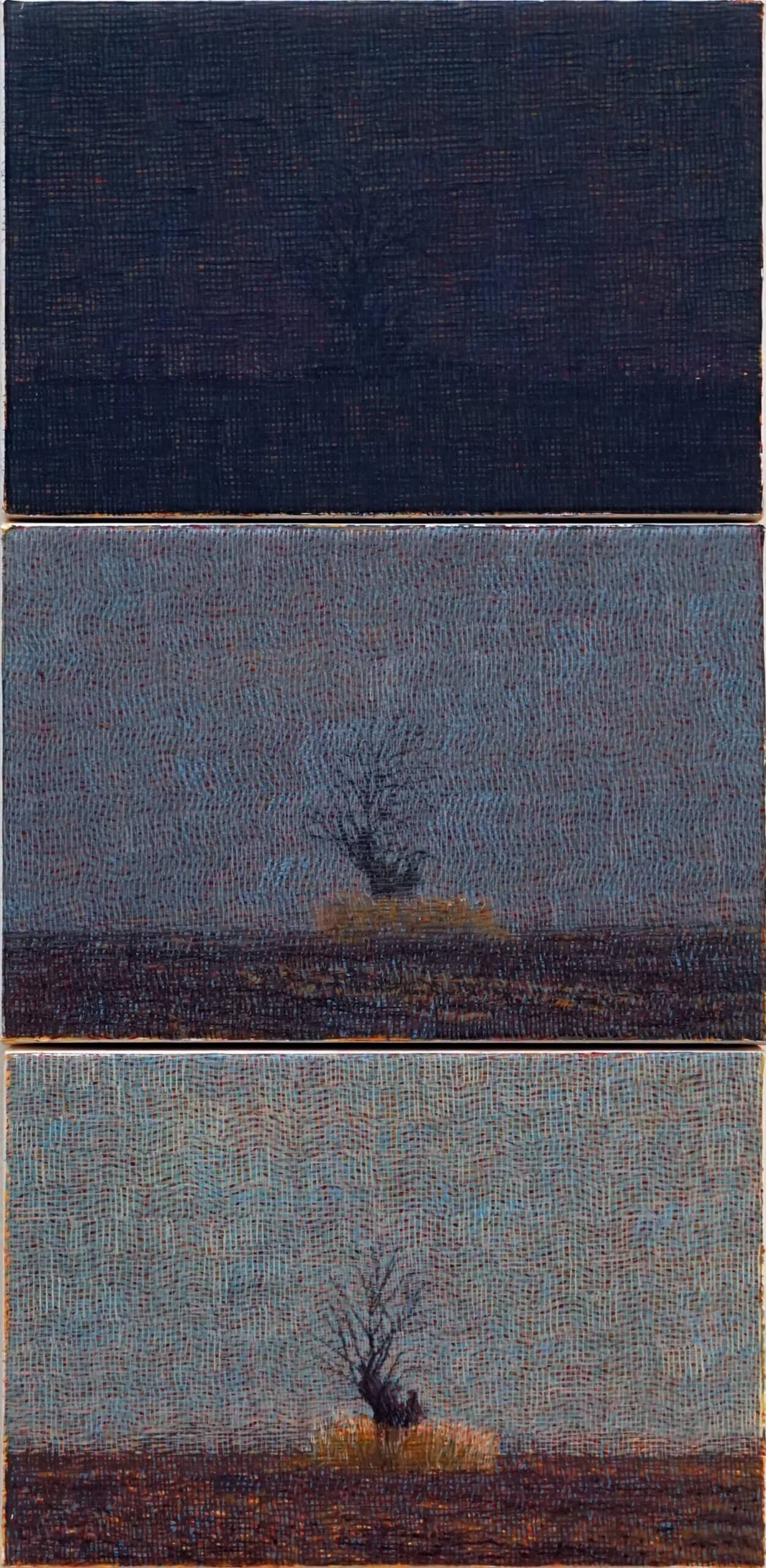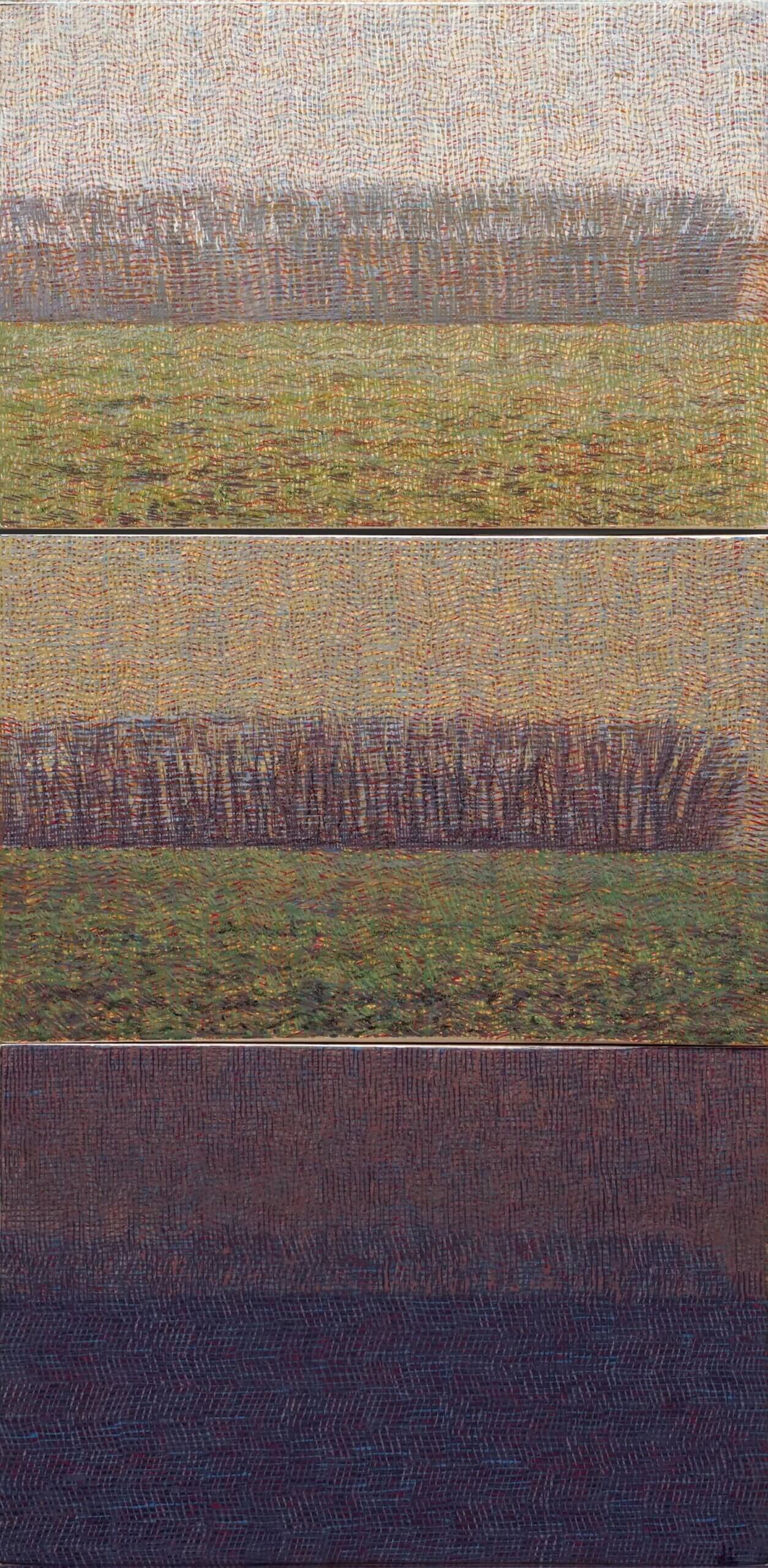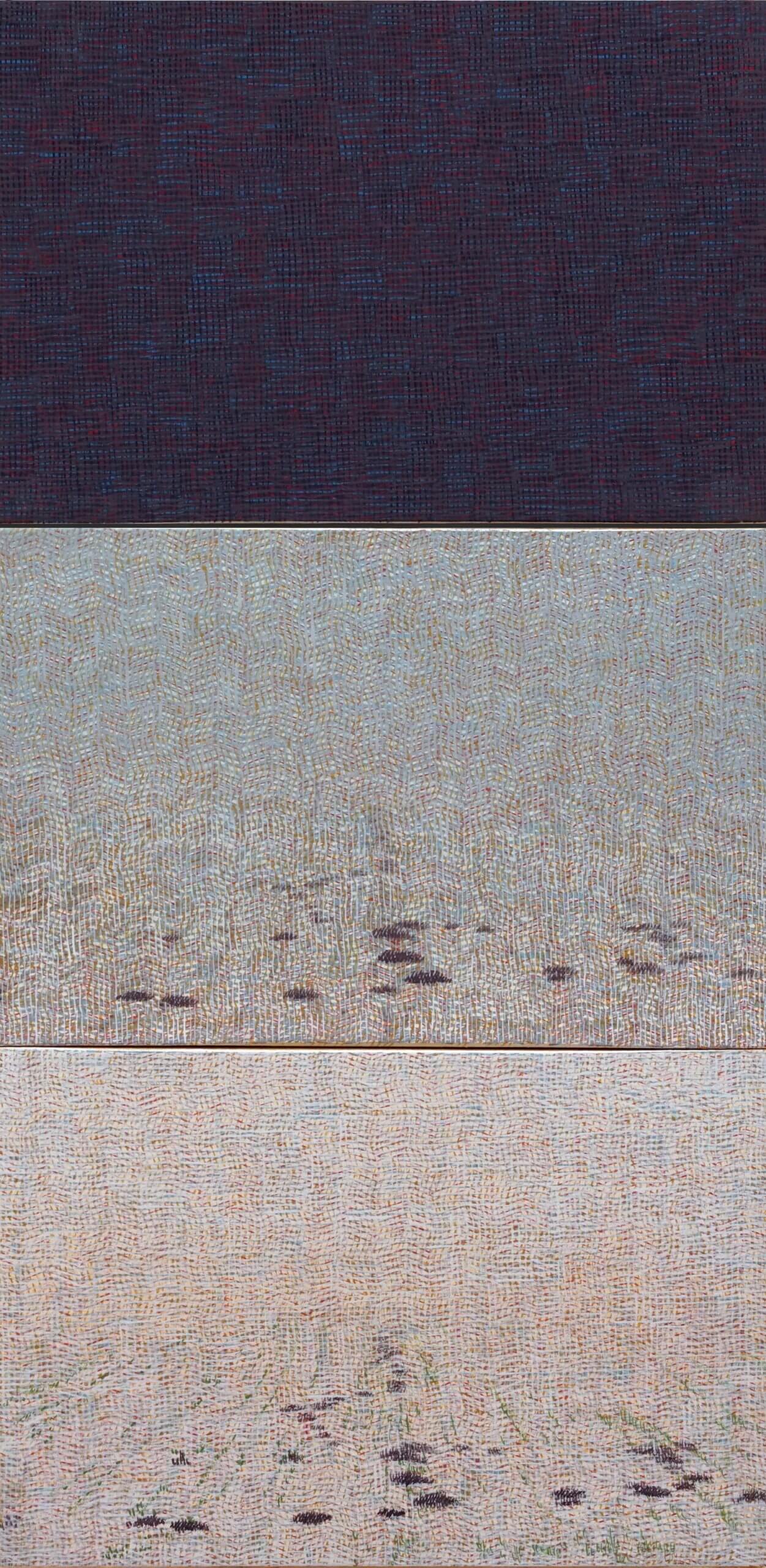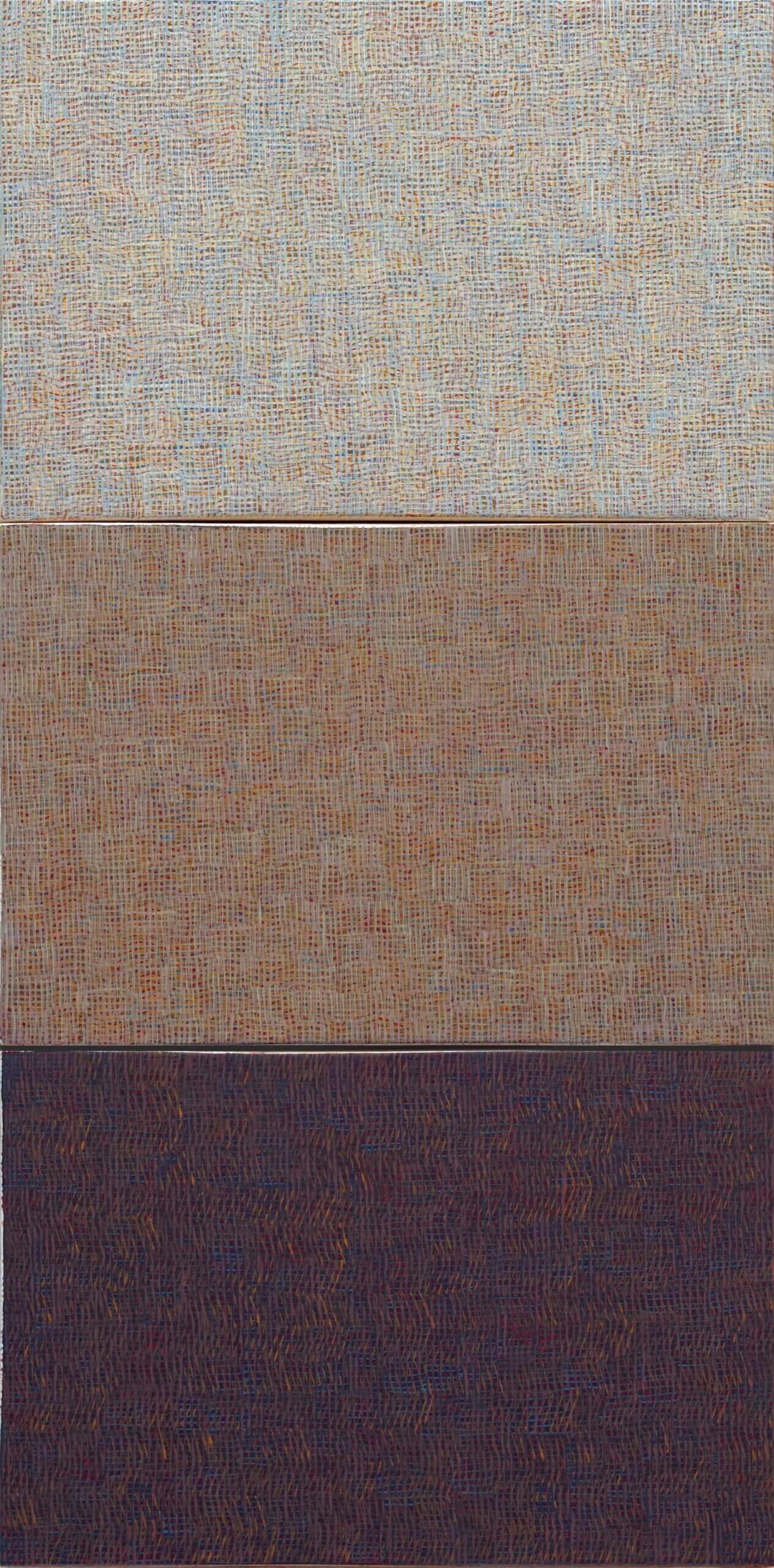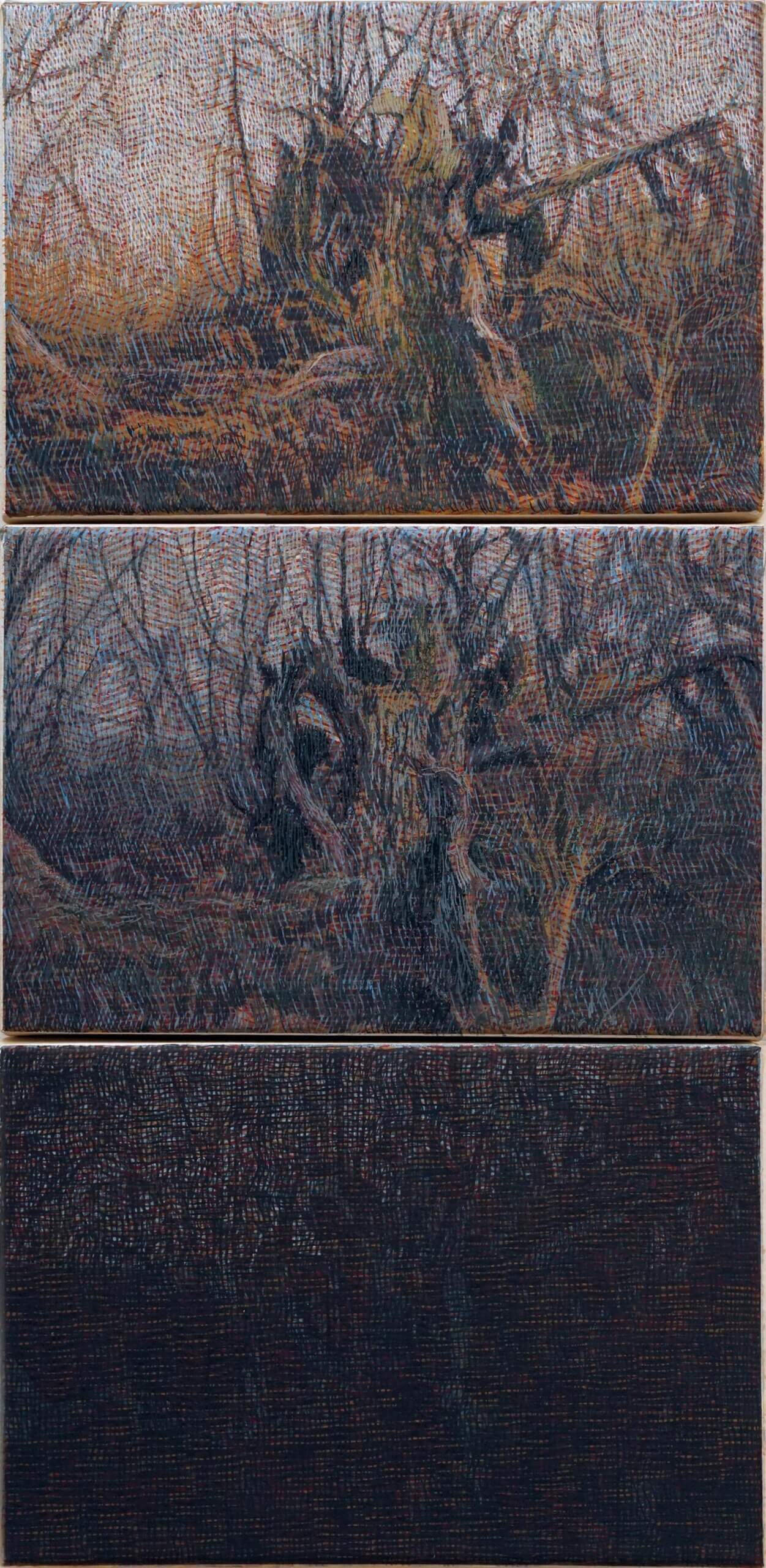Topochronology I 2024- 2025 I
- Projects
- Paintings
- Defragmentation | 2024 – 2025 |
- Topochronology I 2024- 2025 I
- Defragmentation | 2023 – 2004 |
- Violet Garden | 2020 | 2024
- Light-fields, Night-fields | 2019 – |
- Fragments | 2022- |
- Interfields | 2018 – 2022 |
- Triptychs | 2012-2018 |
- Blurred Fields, In the Middle of the Field | 2018 – 2019 |
- Equivalents | 2019 |
- Images of a Fading World | 2020 |
- Pinhole Project | 2021 |
- Other paintings | 2006-2018 |
- Prints
- Paintings
- Recent Activity
- Bio
Topochronology
pri uvažovaní nad tvorivým procesom v prvých fázach vývoja cyklu sú pre mňa hraničné hlavne mantinely v oblasti obsahu. Cieľom je pre mňa vytvoriť si imaginatívne hranice v ktorých budem sériu realizovať. podobne to bolo tak aj sérii Topochronology.
Tento cyklus primárne vznikol náhodne, pri jednoduchom podvedomom nápade, zhrnúť chronológiu dňa istého krajinného polocelku v sveteľných variáciach. Už pri mapovaní návrhov a cielených návštev krajiny v troch fázach dňa: poludnia, podvečera a noci som si všimol veľmi jednoduchý detail, ktorý spočiatku bránil presne definovať môj navrhovaný cieľ.
Po pár dňoch pri komponovaní návrhov som si uvedomil, že fotografické návrhy nesedia, z dôvodu “len” pár metrovej odchýlky pri fotografovaní, ktorá častokrát vytvárala veľký posun aditívnych prírodných scén. tak som si začal robiť na bodoch, s ktorých som fotografoval značky.
To bol začiatok, kedy vizuálna predstava splynie s predtým podvedomým nápadom, do vedomej metodiky. Totiž pri tých značkách, ktoré som konármi v krajine vytváral vlastné topografické body, ako keby som do svojho virtuálneho gpska zakresloval miesta, ktoré som následne maliarsky zamrazil v časovej vizuálnej chronológii.
Zámerne som nevyhľadával akési pekné miesta, “kalendárové” pohľady, ale banálne fragmenty krajiny, kde nič príliš nevytŕča s výraznou estetickou hodnotou.
Tak ako svetlo formuluje počas dňa daný priestor, rovnako aj absorpcia vzdušného priestoru mení svetlo a pohlcuje ho. Či hmla alebo, nízky uhol položeného slnka na oblohe v zimných mesiacoch uberá na svetelnej intenzite a farebnosti. Sú to všetko mementá, pamäte svetla v priestore a čase.
Topochronology
When thinking about the creative process in the early stages of developing a cycle, the boundaries that matter most to me are primarily those related to content. My goal is to create imaginative limits within which I will realize the series. It was similar with the Topochronology series.
This cycle originated primarily by chance, from a simple subconscious idea: to summarize the chronology of a day of a certain landscape segment in light variations. While mapping out drafts and making targeted visits to the landscape at three phases of the day — noon, evening, and night — I noticed a very simple detail that initially prevented me from clearly defining my intended goal.
After a few days of composing drafts, I realized that the photographic sketches didn’t align because of “just” a few meters of deviation during shooting, which often created a significant shift in additive natural scenes. So I started marking the points from which I photographed.
That was the beginning, when the visual concept merged with the previous subconscious idea into a conscious methodology. At those marked points, which I created using branches in the landscape, I established my own topographic markers, as if I were plotting locations into my virtual GPS, which I then froze in time through a painterly visual chronology.
I deliberately avoided seeking out picturesque spots or “calendar views,” instead focusing on banal fragments of the landscape where nothing stands out with strong aesthetic value. Just as light shapes a given space throughout the day, the absorption of atmospheric space also changes the light and consumes it. Whether it’s fog or the low angle of the sun on the winter horizon, these reduce light intensity and colorfulness. All of these are mementos—memories of light in space and time
